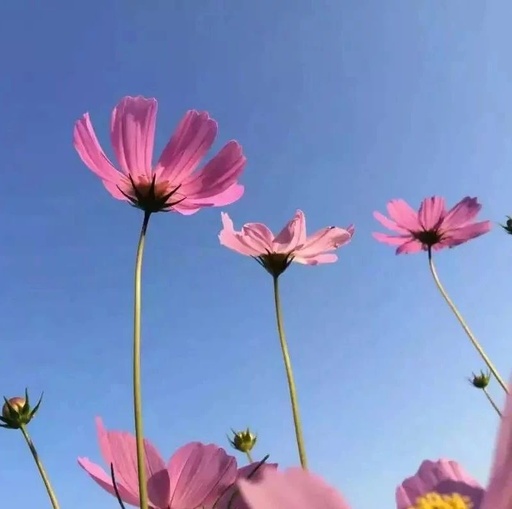Wen Xiao Shu says Making Traditional Chinese Medicine more beautiful, interesting, and closer to life

Astragalus, also known as Huang Qi (黄芪), has a sweet and slightly warm nature, and it belongs to the Lung (肺) and Spleen (脾) meridians. It has the effects of tonifying Qi, lifting Yang, benefiting the Wei (卫) and consolidating the exterior, expelling toxins and promoting tissue regeneration, as well as promoting urination and reducing swelling. However, due to its warm nature, it can easily lead to Yin injury or assist pathogenic factors if used improperly.
In clinical practice, Astragalus is used to treat various conditions and has proven effective. After careful study of its clinical applications, I summarize the following key points of its use.
Wide Application, Based on Pattern Differentiation
Based on the experiences of predecessors and long-term clinical practice, I have summarized twelve major effects of Astragalus through pattern differentiation.
1. Benefit the Lungs
Astragalus is slightly warm and enters the Lung meridian. Both ancient and modern practitioners regard it as a key herb for tonifying Lung Qi.
It is mainly used for conditions of Lung Qi deficiency, reduced defensive function, and invasion by external pathogens, such as colds, rhinitis, and cough with wheezing.
Due to its ability to enhance the body’s immune function, suppress abnormal immune responses, and improve disease resistance, it is particularly effective for conditions like allergic rhinitis, urticaria, bronchial asthma, and eczema, which are associated with low normal immunity and abnormal diseases.
Key points for pattern differentiation: recurrent skin rashes or susceptibility to colds, runny nose, cough with wheezing, shortness of breath, and low voice.
2. Tonify the Middle
Astragalus belongs to the Spleen meridian, its sweet flavor nourishes the Earth, and its warm nature promotes transformation, making it the first choice for tonifying the Middle and nourishing the Earth.
Clinically, it is widely used for Spleen and Stomach deficiency, leading to symptoms such as stomach pain, diarrhea, and vomiting.
Because it nourishes the organs and has a strengthening effect, it can adjust and promote gastrointestinal function, thus having excellent efficacy for digestive tract diseases.
Key points for pattern differentiation: digestive system diseases accompanied by fatigue, abdominal distension, poor appetite, and loose stools.
3. Lift Yang
Astragalus is warm in nature, its Qi is light and rises, and it is good at lifting Yang Qi, mainly used for conditions where Yang Qi is sinking and cannot be lifted, leading to organ prolapse.
From modern pharmacological research, it contains various nutrients that strengthen the body and promote organ function, thus having certain efficacy for conditions like gastric prolapse, renal prolapse, and uterine prolapse.
Key points for pattern differentiation: examination reveals various organ prolapses accompanied by fatigue, preference for warmth and pressure, thin and weak body, and weak pulse.
4. Promote Urination
Astragalus tonifies the Middle, normalizing the central pivot, allowing for upward and downward communication, warming Yang and benefiting Qi, thus promoting urination.
It is mainly used for Qi deficiency, abnormal fluid metabolism, and Yang deficiency leading to water retention, such as acute and chronic nephritis, mucinous edema, idiopathic edema, and liver- or heart-related edema.
Especially, Astragalus has a significant diuretic effect and can accelerate the disappearance of urinary protein, protect the liver, and prevent the reduction of liver glycogen, making it effective for nephritis and liver-related edema.
Key points for pattern differentiation: edema with pale skin, indentation upon pressure, fatigue, cold limbs, preference for warm drinks, and loose stools.
5. Warm Yang
Astragalus is warm in nature and has a strong ability to warm and tonify the original Yang, especially good at warming and tonifying Heart Yang, mainly used for conditions of Heart Yang deficiency, which cannot effectively promote blood circulation, leading to palpitations, chest pain, and water retention.
This is because Astragalus can enhance myocardial contractility and improve heart function, showing significant cardiotonic effects.
Key points for pattern differentiation: palpitations, chest tightness or pain, cold limbs, purple lips, and irregular pulse.
6. Expel Toxins (Promote Tissue Regeneration)
The Shen Nong Ben Cao Jing states that Astragalus “is used for abscesses and chronic non-healing wounds, expelling pus and relieving pain.” It has been referred to as the “key herb for wounds” and is often used for abscesses and skin or digestive tract lesions caused by Qi and blood deficiency, such as peptic ulcers, chronic gastritis, oral ulcers, ulcerative colitis, Behçet’s disease, and skin diseases that do not heal.
This is because Astragalus can enhance the phagocytic function of the reticuloendothelial system and has inhibitory effects on cocci and bacilli, thus enhancing local disease resistance and promoting healing of local lesions.
Key points for pattern differentiation: internal and external ulcers that do not heal for a long time, accompanied by fatigue, pale complexion, thin body, pale tongue, and weak pulse.
7. Activate Blood Circulation
Astragalus is warm and good at moving, it can benefit Qi and warm Yang, promoting blood circulation and preventing stagnation, thus having significant blood-activating effects. Clinically, it is mainly used for various conditions caused by blood stasis in the brain, such as transient ischemic attacks, vertebrobasilar insufficiency, and cerebral arteriosclerosis, leading to dizziness, headaches, and hemiplegia.
Modern pharmacological studies have proven that it can stimulate the central nervous system, improve blood circulation, and promote the recovery of brain cell function, thus treating ischemic cerebrovascular diseases.
Key points for pattern differentiation: headaches, dizziness, hemiplegia, accompanied by numbness of hands and feet, purple lips and tongue, and weak pulse.
8. Astringe and Control
Astragalus has a strong Qi tonifying effect, thus having a good astringent effect, controlling blood and bodily fluid leakage.
It is commonly used for bleeding and excessive bodily fluid loss due to Qi and blood deficiency, such as chronic bleeding from organs, diabetes insipidus, nocturnal emissions, spermatorrhea, spontaneous sweating, and night sweats.
Modern pharmacological studies have shown that the components in Astragalus, such as glucuronic acid and various amino acids, have strengthening effects and can replenish proteins lost due to spontaneous sweating, as well as block skin secretion pores, thus inhibiting excessive sweating.
Key points for pattern differentiation: various chronic bleeding, night sweats, spontaneous sweating, frequent urination, nocturnal emissions, accompanied by pale complexion, fatigue, poor appetite, pale tongue, and weak pulse.
9. Generate Blood
The Ben Cao Gang Mu states that “Astragalus is sweet, warm, and purely Yang, with five uses, including… activating blood and generating blood…”
It is commonly used for blood deficiency caused by various reasons, such as anemia from various causes and blood cell reduction after chemotherapy for malignant tumors.
This is because Astragalus can promote the proliferation of normal progenitor cells in the bone marrow, and the folic acid contained in Astragalus is essential for red blood cell synthesis, thus Astragalus can generate and nourish blood.
Key points for pattern differentiation: pale complexion, palpitations, dizziness, fatigue, pale lips and tongue, and weak pulse.
10. Alleviate Thirst
The Bei Lu states that Astragalus “tonifies the deficiency of men, alleviates five labors and emaciation, alleviates thirst, abdominal pain, diarrhea, benefits Qi, and benefits Yin Qi.” It is clinically used to treat weight loss and thirst in diabetes, showing certain efficacy, because Astragalus can adjust the body’s immune state, suppress abnormal immune responses of the pancreas, and lower blood sugar.
Key points for pattern differentiation: weight loss, thirst, dry mouth, cold intolerance, pale tongue, white coating, and weak pulse.
11. Induce Sweating
Astragalus can benefit Qi and nourish blood while benefiting Yin Qi, and it can also elevate Yang Qi, thus it can nourish the source of sweat to induce sweating.
Clinically, it is often used for Qi and blood deficiency, with external wind-cold, which often cannot induce sweating, and for conditions of imbalance between Qi, blood, Yin, and Yang, leading to dysfunction of sweat glands, such as in cases of body weakness with colds, autonomic nervous dysfunction, and Sjögren’s syndrome.
Key points for pattern differentiation: severe chills, fever without sweating, fatigue, dry mouth, dry skin, cold limbs without sweating, and weak pulse.
12. Expel Wind and Dampness
Astragalus is warm in nature, moves without restraint, reaches both internally and externally, can warm the meridians, activate blood, and open the collaterals, thus having the effect of expelling wind, dispersing cold, and eliminating dampness. Clinically, it is widely used for various wind-cold-dampness conditions, such as joint pain, muscle pain, and neuralgia due to Qi and blood deficiency, invasion of wind-cold-dampness, and blood stasis obstructing the collaterals.
Key points for pattern differentiation: muscle and joint swelling and pain, numbness accompanied by weakness and fatigue, cold intolerance, and relief with warmth, pale tongue with white coating, and deep, thin, weak pulse.
Clinical Application, Focus on Compatibility
In my clinical practice, I find that Astragalus is good at being combined with other herbs to enhance efficacy.
For example, when using it to activate blood, combine it with leeches in a 10:1 ratio to enhance its Qi tonifying and blood-activating effects;
for benefiting the lungs, it is often combined with Fang Feng (防风) to benefit the lungs while dispersing wind and consolidating the exterior, which is effective for lung-related diseases and chronic skin diseases;
for tonifying the Middle, it is often combined with Huai Shan (淮山) to complement Qi and nourish Yin, invigorating the Spleen and Stomach Qi while benefiting Spleen Yin;
when lifting Yang, combine it with Sheng Ma (升麻) to increase its Qi tonifying and Yang lifting effects, promoting the upward movement of the essence of food to nourish the organs;
for promoting urination, often combine it with Han Fang Ji (汉防己), where Astragalus focuses on lifting while Fang Ji focuses on descending, thus complementing each other to enhance Qi tonifying and diuretic effects;
for warming Yang, often combine it with Fu Zi (附子), where Astragalus enters the Lung and Spleen to benefit Qi and warm Yang, while Fu Zi enters the Heart and Kidney to greatly tonify the original Yang, making it widely applicable for Yang deficiency conditions;
for generating blood, combine it with Dang Gui (当归) in a 5:1 ratio, as Dang Gui specializes in blood tonification, thus ensuring that sufficient blood can carry Qi, and abundant Qi can generate blood, greatly enhancing the effects of Qi tonification and blood generation;
for expelling toxins, it is often combined with Pu Gong Ying (蒲公英) to support the body and expel pathogens, promoting the healing of ulcers;
for alleviating thirst, often combine it with Tian Hua Fen (天花粉), using both cold and warm properties to warm Yang, benefit Yin, and generate fluids to alleviate thirst, enhancing the blood sugar-lowering effect, specifically treating diabetes;
for astringing and controlling, combine it with Ma Huang Gen (麻黄根), which strongly benefits Qi and consolidates the exterior to stop sweating, specifically treating Qi deficiency with spontaneous sweating;
for inducing sweating, combine it with herbs that release the exterior to induce sweating in cases of body weakness with colds;
if combined with Xuan Shen (玄参) to balance Yin and Yang and replenish the source of sweat, it is specifically used for autonomic nervous dysfunction and Sjögren’s syndrome;
for expelling wind and dampness, it is well combined with Xi Xin (细辛), as both herbs work together to enhance the ability to open the collaterals, promoting the Yang Qi internally and externally, supporting the body and expelling pathogens, specifically treating wind-cold-dampness conditions.
Using reasonable combinations to enhance the various therapeutic effects of Astragalus is one of the key factors in my effective use of Astragalus.
Pay Attention to Contraindications and Dosage for Effectiveness
In my use of Astragalus, I pay close attention to its contraindications, but I do not rigidly adhere to them. I often adjust the combinations and dosages to achieve the desired therapeutic effects.
I believe that Astragalus is warm and drying, benefits Qi, and can elevate Yang to assist fire. Therefore, it is contraindicated in cases of internal excess heat, hyperactive Liver Yang, Qi and fire surging upward, damp-heat Qi stagnation, and Yang syndrome with initial onset of carbuncles and abscesses, to avoid assisting pathogens and harming the righteous Qi. However, if the patient’s condition requires Astragalus to achieve one of the aforementioned twelve effects, the dosage of Astragalus can be reduced, and it can be combined with herbs that clear heat, pacify the Liver, and promote Qi and drain dampness.
In summary, when the righteous Qi is strong and the pathogenic factors are present, the dosage of Astragalus should be lower; when the righteous Qi is weak and the pathogenic factors are few, the dosage of Astragalus should be higher.
Generally speaking, a dosage of 5-10g of Astragalus can elevate Yang and lift sinking Qi, while 15-30g has significant diuretic effects. However, when the dosage reaches 50-60g, the urine output may decrease. For elderly patients with Qi deficiency and nocturia or frequent urination, a dosage of 50-80g is needed to benefit Qi and consolidate blood. For post-stroke flaccid paralysis, a dosage of 30-50g is necessary to exert its effects of benefiting Qi, activating blood, and opening the collaterals.
Note: This article is excerpted from Zhong Hong’s Medical Cases and Theories, published by Xueyuan Press in March 2006. This public account uses it for academic exchange only. If there is any infringement, please contact for deletion, and please indicate the source when reprinting.
Special Reminder: A beautiful day begins! I hope Xiao Shu’s article can bring you a good mood for the day. If you like the article, don’t forget to click the “Like” button at the bottom right of the article or share it with your friends. The formulas shared in Xiao Shu’s articles should be taken under the guidance of a physician. Due to limited energy and ability, I cannot reply to all messages, please forgive me. May you become your own divine doctor.
Benefits are here:: Open the public account dialogue box and enter “irregular menstruation”, “cold”, “hair loss”, “cold hands and feet”, “stomach pain”, “Liver Qi stagnation”, “injured essence”, “upper heat and lower cold”, “Spleen and Stomach”, “insomnia”, “dampness removal”, “Qi and blood”, “weight loss”, “constipation”, “diarrhea”, “Kidney deficiency”, “acne removal”, “cough”, “rhinitis”, “cervical spondylosis”, “depression” to obtain corresponding conditioning formulas.


